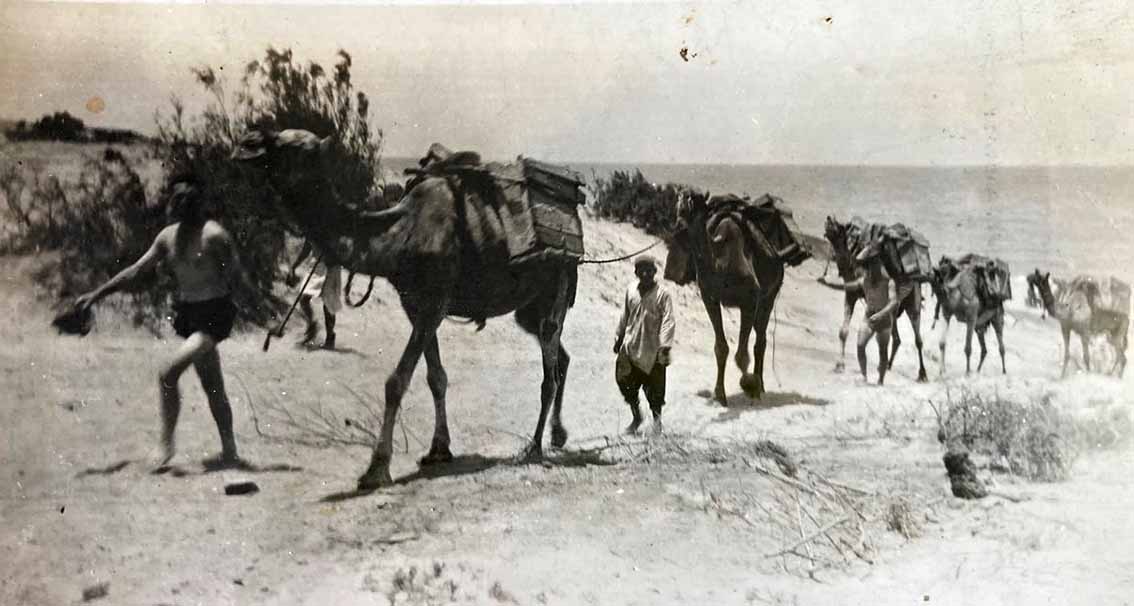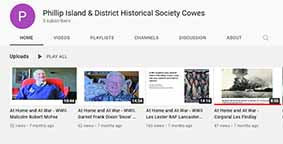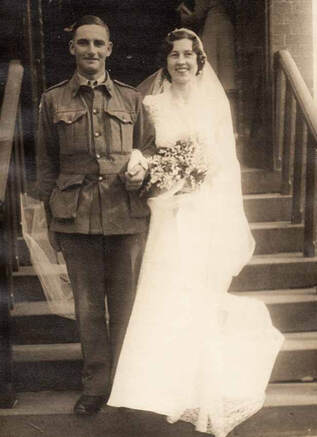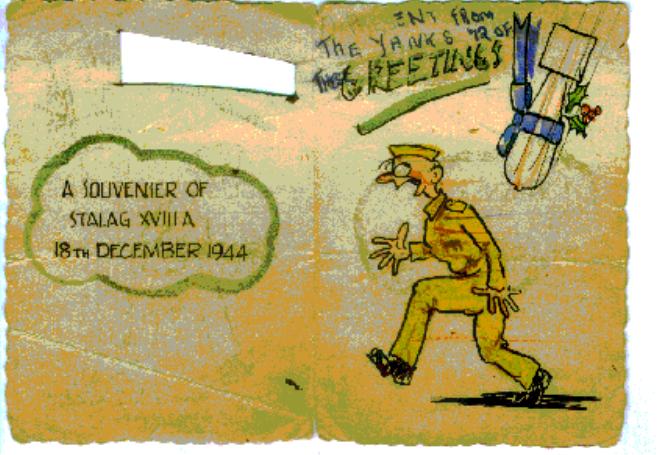By Christine Grayden
IN EARLY 2020, Covid 19 hit the world and placed us all on a war footing, fighting against a near-invisible viral enemy with any means at our disposal. Lockdown closed businesses and attractions everywhere, including the Phillip Island District Historical Society’s museum. The building housing the museum, library and meeting room was earmarked for demolition, to be replaced with a new community facility including a new museum by 2022. Unfortunately, the museum was not able to reopen before the big sorting and packing up had to proceed.
In the midst of this, the society received a grant from the Victorian Government to commemorate the 75th anniversary of the end of World War Two. This enabled us to contract a local audio/video editor, Simon Eddy, with whom we have worked on other projects, to work with me as project co-ordinator and documentary producer. Other volunteers such as committee members were also involved doing some of the research and phoning around during lockdowns. We aimed to produce two documentaries about WWII Phillip Island veterans and Phillip Island during the war.
IN EARLY 2020, Covid 19 hit the world and placed us all on a war footing, fighting against a near-invisible viral enemy with any means at our disposal. Lockdown closed businesses and attractions everywhere, including the Phillip Island District Historical Society’s museum. The building housing the museum, library and meeting room was earmarked for demolition, to be replaced with a new community facility including a new museum by 2022. Unfortunately, the museum was not able to reopen before the big sorting and packing up had to proceed.
In the midst of this, the society received a grant from the Victorian Government to commemorate the 75th anniversary of the end of World War Two. This enabled us to contract a local audio/video editor, Simon Eddy, with whom we have worked on other projects, to work with me as project co-ordinator and documentary producer. Other volunteers such as committee members were also involved doing some of the research and phoning around during lockdowns. We aimed to produce two documentaries about WWII Phillip Island veterans and Phillip Island during the war.
| We intended to use two-plus hours of the society’s own 1995 videoed interviews of Phillip Island residents who had either been here during the war or in active service, to research and produce the documentaries and have public screenings with refreshments provided after each screening. (Remember when we could do that?!) Only a few of those videoed are still alive, but their families were enthusiastic when approached about our planned project. | View videos at https://www.youtube.com/channel/UCvev0a2k0WUeRYbtVZEsBsQ |
The videos were originally done by Rob Mackay for the society, funded by an “Australia Remembers” grant from the Australian Government to commemorate the 50th anniversary of the end of WWII. That project was done in conjunction with Newhaven College year 10 history students and their teacher. Their aim was mainly to capture the stories of those who stayed behind on Phillip Island, but did include a number of short interviews with veterans and social historian Alan Box. Cowes local Frank ‘Snow’ Dixon was interviewed at length in his home about his experiences during the fall of Singapore and his subsequent POW experiences on the Burma-Thai railway and a coal mine in Japan.
Unfortunately, the video footage is by now rather poor quality and had not been previously edited, enhanced or digitised. However, Simon was able to enhance the colour and clarity to some extent, and reduce the babble of people speaking in the background of some of the interviews, and of the air-conditioner noise accompanying Edna Thompson’s interview.
Unfortunately, the video footage is by now rather poor quality and had not been previously edited, enhanced or digitised. However, Simon was able to enhance the colour and clarity to some extent, and reduce the babble of people speaking in the background of some of the interviews, and of the air-conditioner noise accompanying Edna Thompson’s interview.
| We then used edited sections of the footage and extra material made available to us by Mary Burke in her excellent history book of the Phillip Island RSL, Keeping the Spirit Alive. Fortunately, WWII historian Lynette Silver, AM, also had a few copies left of her remarkable book The Bridge at Parit Sulong, which recounts a drawn-out, key battle by the Allies to try and stop the Japanese forces sweeping down the Malay Peninsula, and the subsequent little-known massacre of Australian prisoners of war that followed. Phillip Islander Albert Charles ‘Nip’ West lost his life during this battle, and Lynette’s impeccable research and detailed map enabled us to find the exact location where he had been killed. |
While for months, lockdown precluded face-to-face meetings with interviewees and family members, and access to records not yet digitised online, family members contributed biographical information and memorabilia such as photos. In addition, since the 75-year mark had been reached, many previously suppressed war records gradually went online across the world, enabling more and different online research opportunities.
We identified a number of themes within the 1995 'home front' interviews and chose sections from each interview to feature in each theme. We were able to use some images provided by family members or other historical societies to augment or provide breaks between the different themes and interviews. This video was the first of the five to be uploaded onto our YouTube channel.
Most of the veterans' 1995 interviews were short with poor quality sound and video, so we selected four veterans with varying war experiences, with reasonable quality footage, and created a separate YouTube documentary for each one.
The documentaries include interview footage, narration, images, a poetry reading, sound effects, archival recordings and original music composed and played by a society member. Volunteers Ashley Reed – well-known from his Offshore Theatre performances – and society member John Eddy narrated text extracted from Mary’s book, or which I wrote from research and the help of family members. In a sign of the times Ash recorded his narration at home on a handheld device, downloaded the file and sent it to me via the ‘cloud’, while Simon was able to record John at home. My reading of the Noel Coward tribute to Bomber Command, the poem “Lie in the dark and listen”, which concludes Les Lester’s documentary on YouTube, was recorded directly into the PowerPoint slide on my laptop.
The substantial research was also used in four servicemen’s essays in the Essays and Talks section and an online exhibition also featuring four servicemen which I created for the society’s popular website pidhs.org.au We will upload more material as time permits.
There have been at least six main achievements from this project:
While the Society has few objects in the collection related to the war experience of Phillip Island residents (which is more the role of the Phillip Island RSL and the National Vietnam Veterans Museum), the project enabled the digitising onto the National Archives of Australia website of the complete war records of 12 WWII Phillip Island servicemen. Having the war records online on the National Archives website provided a springboard for me to further research and then write the war experiences of 12 Phillip Island WWII veterans.
Along with hundreds of thousands of other researchers and family members, I am extremely grateful to the staff at the NAA for putting in the hard yards to digitise these records so well.
Extra research sources included: the 1995 interview video footage; war records; family photos, memorabilia and memories; Phillip Island RSL records; websites such as: National Archives of Australia, Australian War Memorial, Department of Defence, BBC, National Film and Sound archive, websites of individual units, POW camps, Wikipedia, etc; books purchased online from helpful historians with 20 years’ experience in writing war history. Images uploaded onto Victorian Collections, Museums Victoria, State Library of Victoria and Trove National Library of Australia, were used for research with some also included with acknowledgement within the documentaries. Research sources used for particular documentaries were included either/or within the footage or at the end of the documentary.
With no visiting permitted for much of the time, the casual chat over a cuppa with either recording or note-taking, where albums, letters and other memorabilia often spontaneously emerge, was impossible. ‘Chats’ became scheduled phone calls, often squashed between Facetime with their grandchildren and telehealth appointments! Providing questions or a framework ahead of time definitely helped.
Texts and emails sometimes included amazing images which had been kindly scanned and provided by geographically distant relatives. Some examples: Hugh Grigg leading a camel train of ammunition in Egypt; with mates taking a compulsory defleaing bath in a waterhole during a freezing Greek winter before capture; a funeral procession through the mud of the Austrian POW camp; and the black humour of a hand-drawn ‘Merry Christmas’ card sent home depicting POWs running for cover while the US Airforce accidentally bombed the camp.
Digital images of all of these and other treasures are now filed awaiting uploading onto Victorian Collections once the museum collection is safely in storage. But not until after the sorting and packing team have had a well-earned month-long break!
Note: Apologies for any advertising the hosts may insert into your viewing experience at the start of the videos. The society has no control over that.
We identified a number of themes within the 1995 'home front' interviews and chose sections from each interview to feature in each theme. We were able to use some images provided by family members or other historical societies to augment or provide breaks between the different themes and interviews. This video was the first of the five to be uploaded onto our YouTube channel.
Most of the veterans' 1995 interviews were short with poor quality sound and video, so we selected four veterans with varying war experiences, with reasonable quality footage, and created a separate YouTube documentary for each one.
The documentaries include interview footage, narration, images, a poetry reading, sound effects, archival recordings and original music composed and played by a society member. Volunteers Ashley Reed – well-known from his Offshore Theatre performances – and society member John Eddy narrated text extracted from Mary’s book, or which I wrote from research and the help of family members. In a sign of the times Ash recorded his narration at home on a handheld device, downloaded the file and sent it to me via the ‘cloud’, while Simon was able to record John at home. My reading of the Noel Coward tribute to Bomber Command, the poem “Lie in the dark and listen”, which concludes Les Lester’s documentary on YouTube, was recorded directly into the PowerPoint slide on my laptop.
The substantial research was also used in four servicemen’s essays in the Essays and Talks section and an online exhibition also featuring four servicemen which I created for the society’s popular website pidhs.org.au We will upload more material as time permits.
There have been at least six main achievements from this project:
- Lockdown meant there were no in-person public commemorations of the 75th anniversary of the end of WWII for the Phillip Island RSL or community members. The documentaries have had a total of about 540 views so far, including group viewings, which enabled some form of meaningful online commemoration for the four servicemen and various WWII Phillip Island residents depicted in the documentaries, and allowed a cross-section of the community to relate to their stories.
- The project has encouraged the society to set up our own YouTube channel on which we intend to upload suitable items from our collection’s archival film and video material which we were able to have digitised last year thanks to a Bass Coast Shire community grant. There are various videos on YouTube regarding the National Vietnam Veterans Museum at Newhaven and a few of the State Coal Mine in Wonthaggi, but very few other YouTube videos or channels relating to the history of Bass Coast.
- Our members have considerably increased their knowledge of Phillip Island’s involvement in WWII.
- Our research enabled us to make new contacts within and beyond the Phillip Island community. These contacts are new sources of information and images for the Society.
- The stories and information captured in the ‘Challenges and Fears at Home’ documentary on our YouTube channel are not captured in any other form for Phillip Island. Many older Phillip Island residents and even family members of those featured did not realise the contributions these people had made in many different ways to the war effort.
- Some of the veterans featured in the individual documentaries had never really spoken to their families about their war experiences. Some of them had not always been easy people to deal with. Our research (parts of which were only shared with the families) enabled some degree of closure for some of these families. A number of the families expressed their appreciation for our commemoration of these men’s war service in the documentaries and essay.
While the Society has few objects in the collection related to the war experience of Phillip Island residents (which is more the role of the Phillip Island RSL and the National Vietnam Veterans Museum), the project enabled the digitising onto the National Archives of Australia website of the complete war records of 12 WWII Phillip Island servicemen. Having the war records online on the National Archives website provided a springboard for me to further research and then write the war experiences of 12 Phillip Island WWII veterans.
Along with hundreds of thousands of other researchers and family members, I am extremely grateful to the staff at the NAA for putting in the hard yards to digitise these records so well.
Extra research sources included: the 1995 interview video footage; war records; family photos, memorabilia and memories; Phillip Island RSL records; websites such as: National Archives of Australia, Australian War Memorial, Department of Defence, BBC, National Film and Sound archive, websites of individual units, POW camps, Wikipedia, etc; books purchased online from helpful historians with 20 years’ experience in writing war history. Images uploaded onto Victorian Collections, Museums Victoria, State Library of Victoria and Trove National Library of Australia, were used for research with some also included with acknowledgement within the documentaries. Research sources used for particular documentaries were included either/or within the footage or at the end of the documentary.
With no visiting permitted for much of the time, the casual chat over a cuppa with either recording or note-taking, where albums, letters and other memorabilia often spontaneously emerge, was impossible. ‘Chats’ became scheduled phone calls, often squashed between Facetime with their grandchildren and telehealth appointments! Providing questions or a framework ahead of time definitely helped.
Texts and emails sometimes included amazing images which had been kindly scanned and provided by geographically distant relatives. Some examples: Hugh Grigg leading a camel train of ammunition in Egypt; with mates taking a compulsory defleaing bath in a waterhole during a freezing Greek winter before capture; a funeral procession through the mud of the Austrian POW camp; and the black humour of a hand-drawn ‘Merry Christmas’ card sent home depicting POWs running for cover while the US Airforce accidentally bombed the camp.
Digital images of all of these and other treasures are now filed awaiting uploading onto Victorian Collections once the museum collection is safely in storage. But not until after the sorting and packing team have had a well-earned month-long break!
Note: Apologies for any advertising the hosts may insert into your viewing experience at the start of the videos. The society has no control over that.



